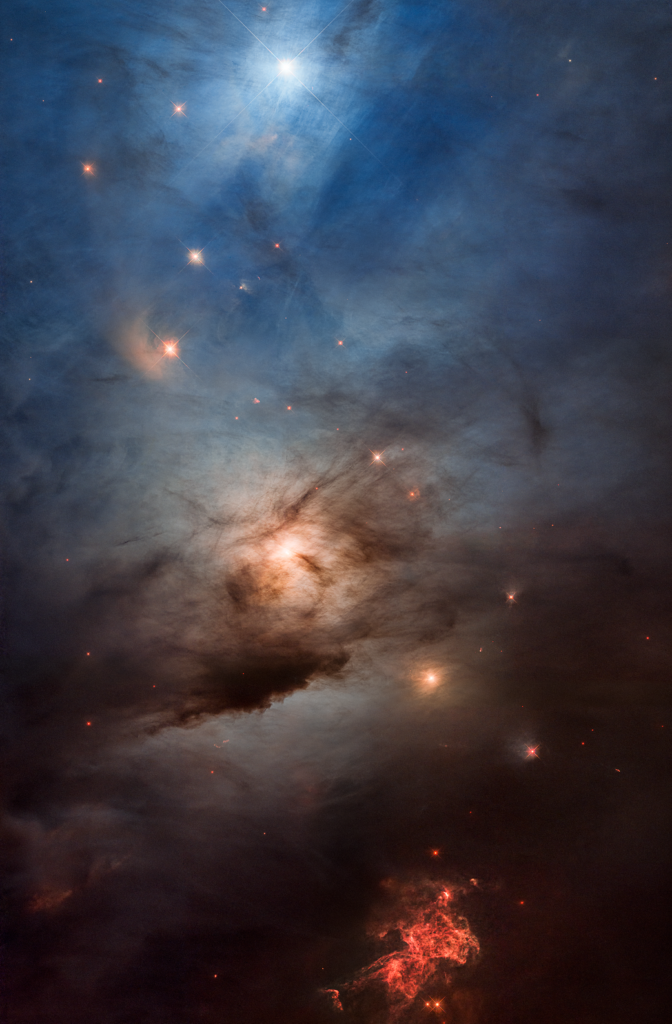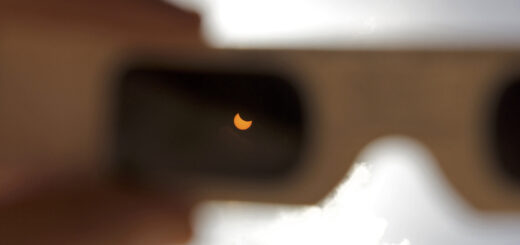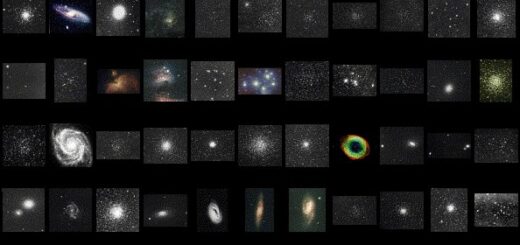Look at this Beauty: Celebrating Hubble’s 33rd Anniversary!
Every year, the Hubble Space Telescope team releases an image to celebrate the spacecraft’s launch anniversary, and this year’s is a stunner. The wispy dark textures, glittery blues, and glowing reds are the hallmarks of a stellar nursery, a region where stars are forming. Let’s look at where this object is, what it is, and why it matters.

WHERE
This beautiful object is NGC 1333, and it is located about 960 light-years away in the constellation Perseus. A light-year is the distance light travels in a year, so you are seeing this object as it appeared 960 years ago, because that is how long the light captured in this image had to travel before falling upon Hubble and its instruments. This never fails to amaze me!
WHAT
So, what exactly are we looking at? Star formation can be quite a tumultuous process, so there is a lot happening here. Let’s focus on a few separate regions.
The eye is immediately drawn to the mysterious wisps in the center of the image. This dark material is interstellar dust, mostly made of carbon and silicate compounds. The feathery patterns in the material are due to its motion, as winds from young stars are giving it a kick. The warm glow emanating through the dust is due to the newly formed stars within. When a star-forming region has dust mixed up in its gases, planets can form around the stars.
This dust is also important in creating the blue glow in the upper portion of the image. The light from the bright blue-white star at the very top is scattered by the small dust particles. When light is scattered by small particles, the blue light gets scattered the most. This is the same reason why our own sky is blue. The same physics, just on a much larger scale!
Finally, ionized hydrogen gas appears as a fiery red towards the bottom of the image. As stars begin their lives, the energy they produce can heat up the leftover gases around them, causing that gas to glow. That is useful, because astronomers can look at the emitted light and determine the chemical composition of the gases.
WHY
Why should you care? By studying star forming regions, we can learn about our own past. Our Sun formed about 4.6 billion years ago, when it did, it likely did not form alone. We know that from researching objects like NGC 1333, a worthy addition to Hubble’s anniversary images.
For more information about this spectacular new image, check out the official press release.
Wishing you clear skies!




1 Response
[…] If you’re interested in learning more about star formation, check out this beautiful star forming region. […]